|
January 2022
|
| |
A new year- hopefully with a few less surprises in store, and a bit more of seeing those we love!
As we farewelled some much loved staff members late last year, you might see some new faces joining us. Grace King will be your smiling face in reception, Grace Dawes will be ensuring your pet's needs are met in kennels, and we are excited to welcome Dr Hannah to the team! Dr Hannah is moving from Adelaide, so be sure to give her a big Orange welcome!
We are sad to say that Dr Shahid will be leaving (hopefully only for a while, not forever ��) later in the month while he voyages to the far north towards croc country! |
| |
|
Meet the team
|
|
|
|
Heading away for Australia Day?
|
| |
Appointments are booking fast, so if you need your pet vaccinated for boarding, book early to avoid disappointment! If you're unsure when your pet is due, call reception to check. As we've all learnt over the past year, vaccinations take 2 weeks to be maximally effective! Cats need annual vaccinations too- for cat flu and Calicivirus. Further to that, some areas, like Dubbo, are seeing surges of Parvovirus, meaning you want your pet protected! |
| |
|
Book Online
|
|
|
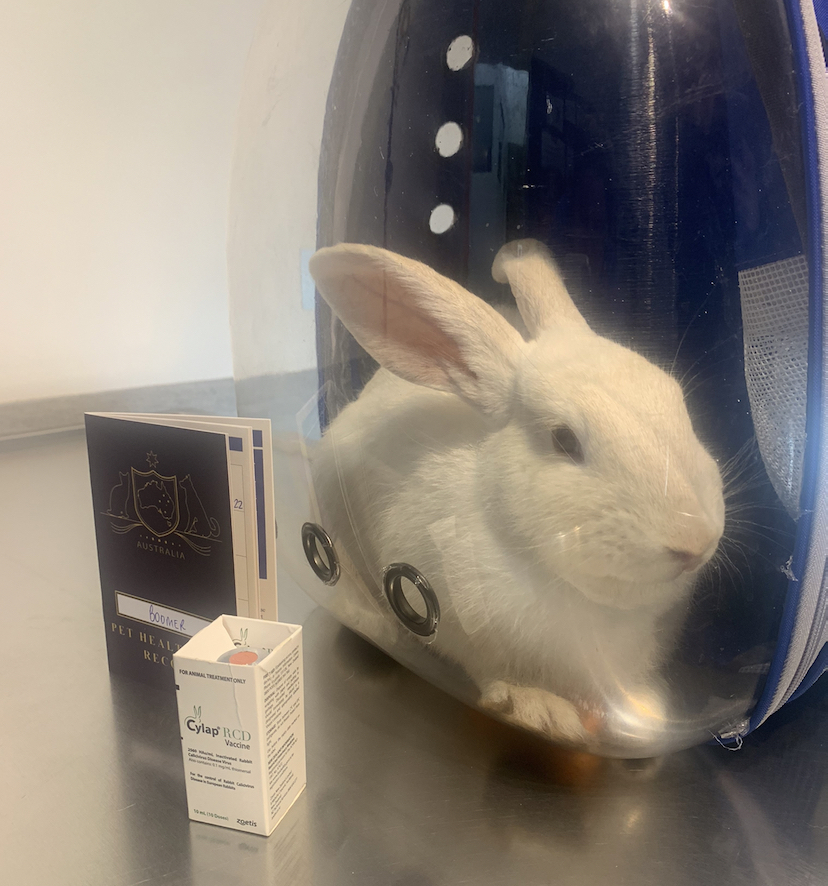
|
HOP TO IT!
Rabbits vaccinations are back!
|
| |
Boomer here was the first bunny to take the opportunity to get vaccinated with our new stash of rabbit vaccinations. Call to book your bunny in. Here, Boomer shows off her new vaccination book, as well as her bunny backpack that she used to attend her appointment in style!
It is recommended that rabbits be vaccinated every 6 months against rabbit calicivirus disease (RCD).
Rabbit calicivirus disease is a viral disease that causes acute hemorrhage (bleeding) and sudden death. There are various strains of the virus all of which cause varying degrees of illness. |
| |
|
Book online
|
|
|

|
|
Farewell from Kimbo
|
| |
They say all good things must come to an end and after 20 years at OVH my time has ended.
I have had the joy of working with some great staff during my time, and have been a part of a huge family. Friendships have been formed that will stand the test of time.
Vets and nurses are a very special group of people who choose to work in a very demanding profession which brings joy but also a lot of sadness and stress. They deserve more gratitude and understanding than they receive.
2021 has been a challenging year for many but one way or another we have made it through. I know 2021 would of been much harder without the love and support I have received from my OVH family.
Well wishes to you all, thanks for making each day so very different and being wonderful, loyal clients of OVH.
Regards
Kim |
|
|
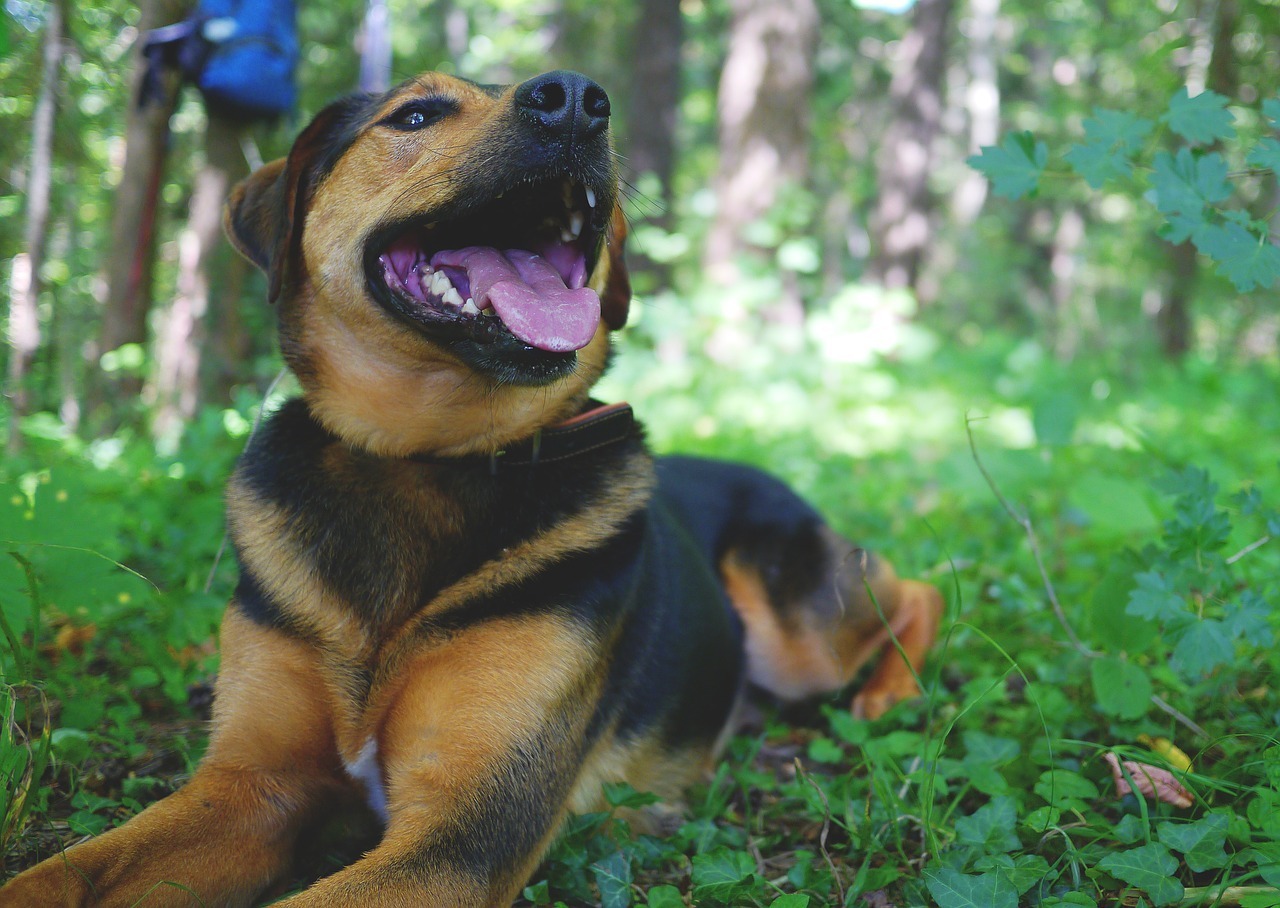
|
|
Heat stress - working dogs and brachycephalics
|
| |
We are finally starting to get some of that typical Australian hot weather, but some of us and our animals don’t always have the luxury of staying cool inside with fans and air conditioning. Working dogs play a vital role in stock management but as the days are getting hotter, it is important that they stay cool and not get overheated. For brachycephalics, like Boxers, Bulldogs and Pugs, their short noses and panting difficulties mean that they are very prone to heat stress.
What is heat stress?
Dogs don't sweat like us humans, instead they release heat by panting and by sweating through their paw pads and nose. If they are unable cool themselves enough their body temperature begins to rise. Hyperthermia is the term used to describe this elevation in body temperature as normal dog body temperature is 37.5-39C, whilst patients with hyperthermia may have body temperatures greater than 39.7C
Types of Hyperthermia:
1. Heat Stress
2. Heat Exhaustion
3. Heat Stroke
Early Signs of Heat Stress
It is important to recognise early onset of heat stress by monitoring signs your dog might show:
• Panting and bright red gums
• Increased thirst
• Seeking cool surfaces to lie upon
• Lying down without a command to
• Seeking shade
• Avoiding activity
• Reluctance to work or delayed return
Signs of Severe Hyperthermia
• Weakness/Collapse, progressing to seizures, coma, and death
• Pale or grey looking gums, vomiting and / or diarrhoea
Treating Hyperthermia
If you are suspecting your dog may be suffering from one type of hyperthermia you need to do the following:
STOP WORK * REMOVE FROM HEAT * RAPID COOL DOWN * TRANSPORT TO VET
• Cool your dog down by placing cool towels over or a cool bath
• Put in the ute with air conditioning going
• If you have an ice pack wrap with towel and place under the armpits and under the hind legs
• Monitor temperature if possible and stop cooling when the dog’s body temperature reaches 39.7C (as temperature will continue to fall)
• Transport to Veterinarian- Complications may arise as far as 4 days after a heat stress incident
Preventing Hyperthermia ‘
We all know a farmer’s work is never done but the best way to keep your dog cool is:
• Working and exercising dogs in the cool parts of the day (early morning/early evening)
• Active cooling (wet before working or allow to swim in a dam)
• Work: Rest cycles e.g., Work for 15-20mins, Rest 40 minutes, as body temperatures fall slowly
• Encourage drinking: dogs should have 50ml/kg/day of water (e.g. a working 20kg dog should drink at least 1L in a day)
• Don’t leave tied up on back of ute in the sun or in the cab with the windows up
• Check their paws (for heat, redness or burns)
• Acclimate new dogs to warm temperatures for up to 2 months before starting to work them |
|
|
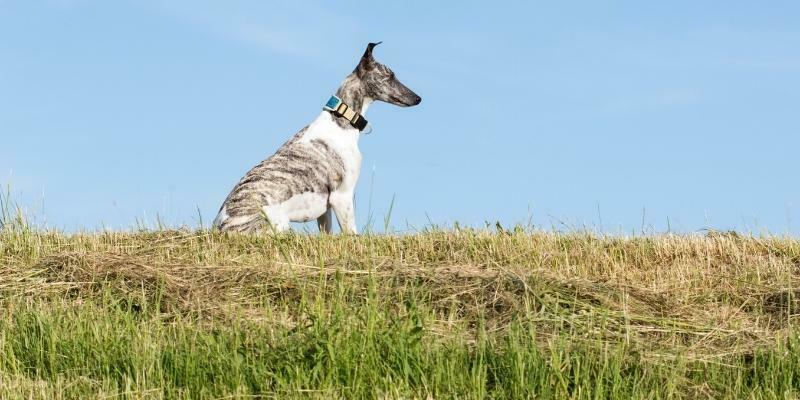
|
|
Snootiful sighthounds
|
| |
Whether you’re thinking of adopting an adult greyhound like through the GAP program, or welcoming a whippet pup into the household, you’re in for a treat! As well as looking like the perfect cross between a dog and a reindeer, sighthounds are generally gentle, sweet dogs who make loyal and interactive family members. Read on for some of the benefits and potential challenges of owning a sighthound.
Benefits of sighthounds:
- Just have a look at their sweet little faces, and perhaps search “sighthounds dressed as reindeer” - you won’t be sorry!
- They make gentle, devoted companions, and are often very tolerant and affectionate with children (with adequate supervision, as recommended for any young child-dog interaction)
- They will entertain you with bursts of highly athletic “zoomies” in open spaces, and then charm you with calm snuggles on the couch afterwards
- They are generally considered to be relatively “healthy” breeds, having been bred for performance
- Other than brushing out loose hairs (and the usual nail clipping required for most dogs), whippets and greyhounds require very little grooming maintenance
- They are generally not “barkers”
Potential challenges of owning a sighthound:
- Their lean bodies and finer fur make them feel the cold (although this can be remedied with a warm coat)
- They can be prone to sensitive tummies, sometimes requiring prescription diets or other treatments to manage
- They are prone to dental disease and require regular dental hygiene maintenance
- Whippets can have a predisposition to developing heart disease, whilst greyhounds can have a predisposition towards developing bone tumours
- Puppies, particularly of the whippet variety, can be high-energy and mischievous until maturity at around two years old
Ask our friendly team if you’d like any further information on sighthounds. We’ll try to refrain from making any “Whippet real good” jokes! There's a link in the image to the Greyhound Adoption Program if you would like further information! |
|
|
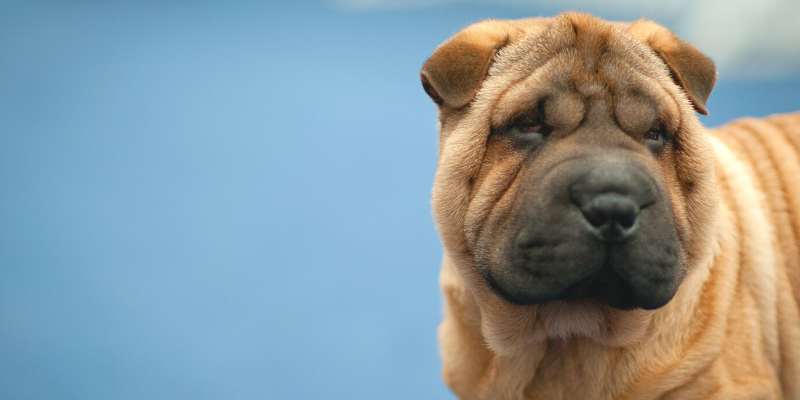
|
|
Them rolls: dog breeds with excess skin
|
| |
Shar-peis, basset hounds, neapolitan mastiffs, bulldogs and dogue de bordeaux. What do they all have in common? Lots of skin folds and wrinkles!
Whilst dogs with rolls can look appealing, their excess skin can predispose them to chronic skin, eye and ear issues. Here’s how it can all "unfold".
Skin issues
Excess tissue forming folds is a real problem for skin health. These skin folds trap moisture and heat, and are difficult to clean, making them prone to developing irritation and bacterial or yeast infections.
Additionally, thick, puffy skin rolls can make it difficult for veterinary staff to access the dog’s veins beneath. This can prove challenging if that pet ever requires intravenous medications or fluids, such as for routine surgical procedures or health emergencies (appreciate the skills of your vets and nurses!).
Eye issues
Excess skin around the eyes of droopy-skinned dogs can alter the shape of their eyelids. This can make these breeds prone to 'entropion', a condition where excess eyelid tissue rolls inwards, causing the eyelashes to rub painfully against the surface of the eye. Dogs with entropion often have weepy, sore eyes and can develop severe infections or eye ulcers – left untreated, this can progress to permanent eye damage or even blindness. Surgeries may be needed to correct this- often this can be done by our team, or referral to specialist Veterinary Opthalmologists can be arranged- just ask.
Ear disease
Unfortunately, many of these loose-skinned breeds can also be predisposed to recurrent, painful ear infections. This is partially due to breed-related conformational issues, such as large, floppy ears, in breeds such as the basset hound, and the unusually narrow ear canals of the Shar Pei, but may also be due to underlying allergies.
If your dog has excess skin, it’s best to check them frequently for any signs of discomfort and seek advice from our veterinary team if you have concerns. We’ll help to keep them “on a roll” with their skin, eye and ear health! |
|
|

|
|
Climate damage on the Great Barrier Reef: can we hit “reef-resh”?
|
| |
Image sources: the ABC, the Guardian
Hope is in the air - or better yet, in the sea - after a recent coral spawning event took place in November last year. This annual spectacle in the Great Barrier Reef sees entire colonies of coral reef simultaneously release gametes (tiny reproductive cells) into the water to join together and create new coral.
During the event, the reproductive cells float up to the surface, resembling clouds made up of billions of white, yellow, red and orange flakes when viewed underwater.
Incredibly delicate, the event can only occur during extremely specific conditions. In order for the reef to erupt, the event must take place at night, after a full moon. Ocean temperatures must be above 26 degrees for a full month, and the water around the reef must be calm.
Since 1998, 98% of individual reefs along the Great Barrier Reef have been hit by coral bleaching caused by rising ocean temperatures from global heating.
Coral bleaching occurs when ocean temperatures get too warm for the algae that provides nutrients for the coral to survive. When the algae leave, so does the coral’s colour and vitality, as well as the ecosystems that are supported by the algae, leaving only a sickly white skeleton.
Coral reefs are considered one of the most sensitive ecosystems to global heating and new research published in the Global Change Biology journal predicts that even if we are able to keep global warming to 1.5°C, bleaching strong enough to kill coral permanently would likely still attack the reef more than three times a decade. Lead author of the study, Jen McWhorter, warns that global heating above 2°C would be “very, very bad” for the Great Barrier Reef.
For the last few years, coral from across the reef have been collected by The Australian Institute of Marine Science to study how temperature tolerant they can be, so that coral with higher heat tolerance can be sourced and bred back into the reef. This method of ‘coral IVF’ aims to help the reef become more temperature tolerant as oceans continue to heat up.
Marine biologist Gareth Phillips, who captured the reef’s spawning event on film with his team, encourages that it is a “sign that the reef is recovering”.
However, James Cook University professor and a leading expert on the effects of global heating on coral reefs, Terry Hughes, reminds us that corals can only recover so far, and “the end point depends on how much warmer we are prepared to allow it to go.”
Learn more about the Great Barrier Reef from the ABC, the Guardian and the ABC. |
|
|
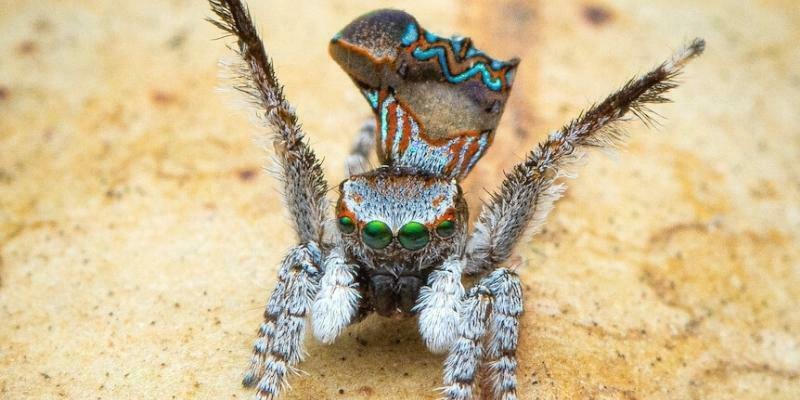
|
|
Animal News In Brief
|
| |
The peacock spider
Image source: the ABC
Why these spiders are all over the web
Although our reflex to spiders can often be to flinch, the peacock spider is anything but big, hairy and scary. Two new species of the jumping peacock spider have recently been discovered in Western Australia, and although they are known for their jumping, these harmless, grain-of-rice-sized arachnid friends are treasured for something else entirely. For most of the year that they live, the males stay a humble brown colour, but when spring reaches and they moult for the last time, something magical happens. By opening up the fans on their abdomen, the brightest, most alluring colours are revealed for a visual display as they dance to attract a mate. The almost-metallic colours range among the different peacock spider species as well. Full of enchantment, one species was even named after Van Gogh’s Starry Night painting for its astral resemblance. Spider-enthusiast and spotter of the latest peacock spider species, Flynn Prall, says that after people appreciate the spiders from his photographs, they become more likely to relocate spiders rather than kill them. When it comes to spiders, Prall says, “that's all it's about, understanding.” Have these colourful little guys changed your mind on spiders?
Read more about peacock spiders from the ABC.
-----
Meet baby rhino, Hari
In November of last year, a not-so-little special addition was welcomed at Taronga Western Plains Zoo. Hari, the greater one-horned rhino, was birthed at the zoo by his mum Amala after a 475-day pregnancy. Hari is only the second of his species to be born in Australia. Greater one-horned rhinos, originally from North-East India, can only give birth to one calf every four years, and with only 3,700 left in the wild, Hari’s arrival signifies that there is still hope for the conservation of this species. Hari already weighs 100kg at four weeks old, and is putting on more weight by the day. Despite just being a baby and needing a strict diet of mum’s milk only, Hari is already keen to experiment with eating Amala’s favourite branch bits. As Kat Pollock, Hari’s keeper, says, "he thinks he's a big boy already." Caring for 5,000 animals from over 350 species, Taronga Western Plains is the only place in Australia that houses the greater one-horned rhino. They also recently announced the birth of a female black rhino calf, Sabi Star.
Read more about Hari at Taronga Western Plains Zoo from the ABC.
-----
An industrial designer saving animals behind the scenes
In Melbourne’s outer east resides a little workshop, where unique inventions for animal welfare are envisioned and created. The workshop is owned by engineer and industrial designer Girius Antanaitis, who, back in 2014, got in touch with Zoo Victoria’s Healesville Sanctuary to see if he could offer a helping hand. Little did Girius know that his contact with the Sanctuary would lead to a career in developing solutions for complicated veterinary surgeries. With a workshop ready to answer any kind of challenge, Girius’s portfolio is rather conglomerate. One of his inventions includes a gag to help vets keep wombats’ mouths open while they file their teeth, as in captivity, their teeth don’t file down naturally as they do in the wild from eating native grasses. Another of Girius’s inventions includes the world-first pelvis implant, built from scratch for a sun bear named Hitam, whose life had been spent in a cage on a rice and milk diet, hindering the growth of her pelvis and making toilet trips very painful. The implant Girius made was able to correctly expand Hitam’s pelvis to provide her comfort. Hitam is now living a happy life at a sanctuary in Borneo. Many of Girius’s projects are self-funded out of his love for animals, “what’s important to me is [assisting] the animals no-one’s helping,” says the engineer.
Read more about Girius and his inventions from Australian Geographic. |
|
|

|
|
Heat stress in wildlife
|
| |
The hot Australian summers not only take a toll on us and our pets, but also our native wildlife.
These animals are very good at tolerating the heat but sometimes it can get to much for them especially if they are not used to long periods of hot temperatures.
Learning to recognise when an animal is in distress and reaching out to wildlife carers can be the difference between life and death for these guys!
What is Heat Stress?
Heat stress is one type of hyperthermia, which causes the body’s temperature to increase, which dehydrates the animal, this in turn can cause organ failure and eventually death if not treated.
How do I know if a wild animal is under heat stress?
Each species has their own way of keeping cool (for example, kangaroos will lick their forearms but even they can become heat stressed).
Signs of Heat Stress in Different Species
Birds
• Holding wings away from their body (*note in some water birds this is normal behaviour)
• Panting
• “Glassy-Eyed”
• Slow and easy to catch (some might rock back and forth if perched)
Possums
• Might be out during the day (to escape heat in the roofs)
• On the ground (seeking water, shade or collapsed)
• Seeming confused or disoriented
• Panting and/or salivating
• Burns on paws
Kangaroos
• Saliva-soaked forearms (heavily saturated)
• Drooling
• Increased breathing if lying down
• Confused or disoriented
Koalas
• On the ground or sitting at base of tree (sometimes with head on trunk)
• Disoriented or confused
• Seeking water (koalas normally get enough water content from the eucalyptus leaves they eat)
• Vomiting
Flying Foxes
• Tree hugging or low in trees
• On the ground
• DO NOT TOUCH- CONTACT A WILDLIFE CARER as soon as possible.
*Did you know that bats, big and very very small, carry diseases infectious to humans?*
What do I do if I Find a Heat Stressed Animal?
• Pick up the animal with a towel and place it into a well-ventilated box or pet carrier
• Do not subject the animal to rapid changes in temperature – they should be cooled slowly
• Reduce the animal’s stress by keeping noise down, and children and pets away
• Water can be provided in a bowl but do not offer any food
• Contact your local wildlife rescue group
(WIRES 1300 094 737 or https://www.wires.org.au/rescue/report-a-rescue )
• ALWAYS OFFER WATER IN SHALLOW DISH, DON’T POUR WATER INTO AN ANIMALS MOUTH!
How Can I Help Wildlife During Hot Weather?
• Provide shady areas and try to keep domestic animals inside (as it is cooler for them)
• Use the garden hose to mist water spray into trees and shrubs.
• Mist animals (please don’t spray water directly on them)
• Leave out flat shallow bowls of water, if deeper bowls-place larger rocks or sticks in to help prevent accidental drowning
• Hang water dispensers from trees or place a bowl in a hanging basket that can be easily accessed by birds and bats |
|
|
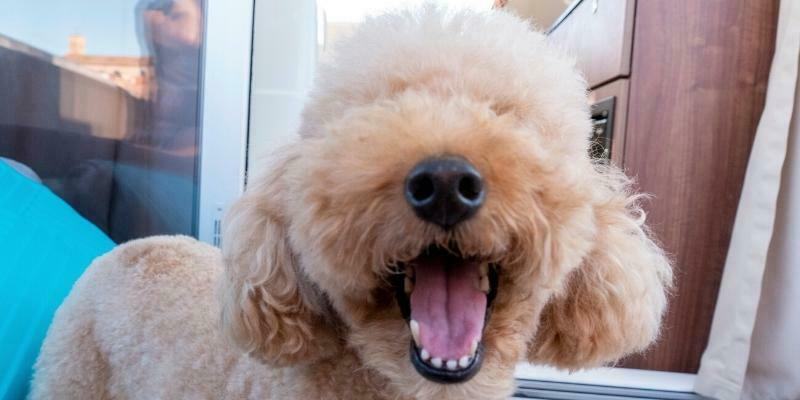
|
|
Lapping up the attention
|
| |
The companionship and comfort of a little dog curled up on your lap can be a real positive for mental health. Whilst many dogs love a good cuddle, breeds such as Chihuahuas, Poodles, Shih Tzus and Maltese have a particular reputation for being devoted lapdogs.
Behaviour
Lapdogs often form a strong emotional bond with their owners, making them seem almost human with their perceptiveness and apparent empathy. However, some lapdogs can become so bonded with their owners that they can feel quite anxious if separated from them, or if another human or dog approaches. This can occasionally provoke them to show aggressive behaviours, as they try to ward off the apparent threat.
It’s important to provide your little dog with lots of opportunities to socialise and gain confidence through positive experiences with other people and animals. This is particularly important before sixteen weeks of age, as part of normal healthy development, but should continue throughout life.
If your lapdog is older and showing some anxious behaviours when separated from you, or with other people or animals, have a chat with our vets regarding behavioural modification treatment options to help your pet gain confidence.
Medical issues
Whilst the various lapdog breeds each have their own particular disease predispositions, there are a few common medical issues that we see amongst the group. These are:
- A tendency towards obesity, which can place strain on the heart, lungs and joints, and contribute to other diseases. Special diets like Hills Metabolic can be really useful (see the link in the photo)
- Dental issues leading to pain and infection, often needing ongoing annual dental work and home care, including tooth brushing
- Joint issues such as bowed forelimbs or luxating patellas (loose kneecaps), which can cause discomfort, leading to surgery and arthritis. Joint supplements like 4cyte gel and Antinol capsules can keep the joints going into old age.
It’s best to have your pet health-checked every 12 months up to eight years old, and then every six months thereafter. This will help ensure that your little companion stays in tip-top mental and physical health for many future years of cuddles! |
|
|
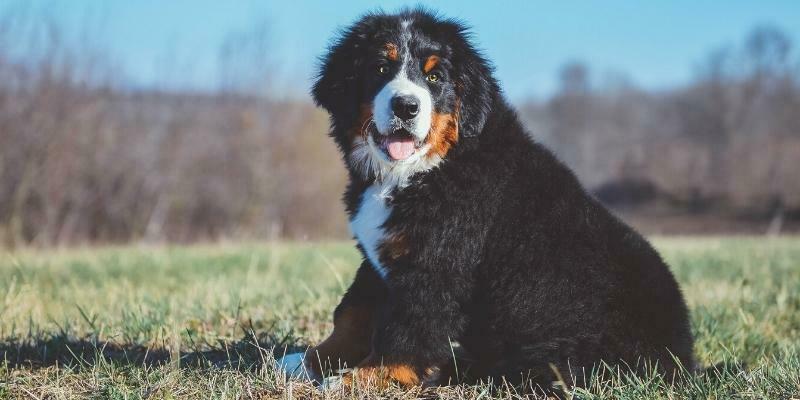
|
|
Giants among us
|
| |
Despite their intimidating size, giant breeds such as Bernese Mountain dogs, Dogue de Bordeaux and Mastiffs are often devoted, gentle and sensitive family members.
It’s important to be aware that these “Big Friendly Giants” will naturally cost more to maintain than the average dog, needing more food, bigger “dog furniture”, and larger doses of any medications. They will also require special care and training to keep them healthy and easy to handle.
Special care during growth
Giant breed puppies mature slowly and are not considered fully-grown until about two years old. It’s important to protect your pup’s developing joint health by:
- Feeding a large breed growth diet until 18-24 months old – these are specially formulated to support slow, steady musculoskeletal growth and to keep your pup in lean, healthy body condition
- Keeping exercise gentle and controlled for the first 12-18 months
It’s also ideal to purchase your pup from a breeder who adheres to hip and elbow health scoring when breeding their dogs (depending on your particular giant breed). If you have any queries, our veterinary team will be able to explain more about hip and elbow scoring in relation to purchasing a puppy.
Good training
Given your adult dog will probably be roughly the size of a small pony, they should be well-trained from a young age! A good dog trainer who uses positive methods can help you learn to walk your giant pet comfortably, as well as manage any potential issues, such as jumping up or surfing for snacks on the kitchen counter.
Rapid ageing
Unfortunately, these gentle giants age at a faster rate, and are considered “elderly” by six-to-seven years of age.
It’s important to have your older dog health-checked every six months, which can help us detect common giant breed health issues, such as arthritis and tumours. As well as keeping your pet comfortable, we can make recommendations on household modifications to support their mobility.
We’re big on health and happiness for big pets! |
|
|
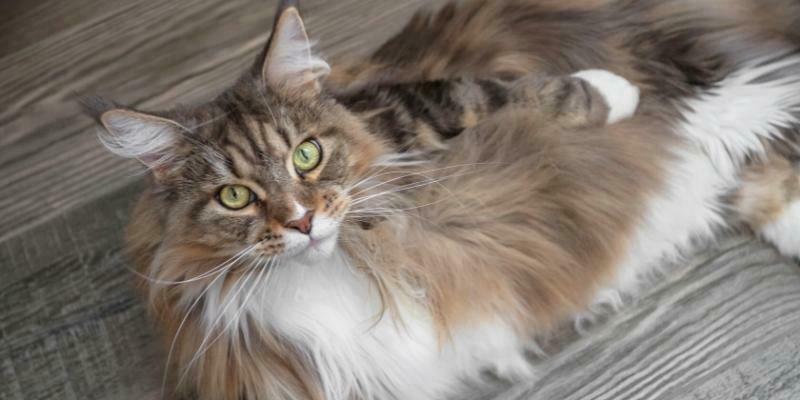
|
|
Super-friendly cats: 'Slinkies' and 'Floofs'
|
| |
In addition to particularly confident 'moggies', there are some popular cat breeds with a reputation for being highly friendly and almost dog-like in their behaviour. We like to divide these cats into two cat-egories – the 'Slinkies' and the 'Floofs'. In the Slinkies category are Burmese, Siamese and Sphynx cats, while Maine Coon and Ragdoll cats make up the Floofs.
Behaviour
These friendly breeds make wonderful pets for owners who want a particularly people-oriented cat. However, their inquisitive natures can make them more likely to get into mischief! Slinkies are known for their predisposition to pica – a habit of eating silly things such as hairbands or wool, which can cause dangerous gastrointestinal obstructions.
As well as keeping any potentially edible items packed away in cat-proof containers, it also helps to keep your super-friendly cat busy with a good routine of environmental enrichment. If they don’t have access to a safe outdoor area for jumping, climbing and scratching, you’ll need to provide some sturdy cat furniture (such as cat climbing trees and horizontal scratching platforms). Most cats will enjoy some cat grass to nibble on, as well as a variety of interactive toys, such as fishing rod toys, ping pong balls and food puzzle toys.
Special health care
Like most breeds, Slinkies and Floofs can have some special care requirements and potential health issues. These include:
- Regular grooming for Floofs to help prevent matts and hairballs
- Regular, gentle skin cleansing for Sphynx cats, involving the use of baby wipes and/or baths using a cat-friendly shampoo. Did you know that the oils in their skin can cause staining on their teeth?
- Potential genetic predispositions towards certain issues, such as heart disease, skeletal or neurological problems, metabolic diseases, kidney disease or feline asthma – have a chat with one of our veterinarians for more information on monitoring your cat for any relevant breed health predispositions. We can even arrange tests for DNA linked diseases to help tailor a care plan for your cat.
However, with the right care, these super friendly cats make the purr-fect companions! |
|
|
This email contains comments of a general nature only and is not intended to be a substitute for professional veterinary advice. It should not be relied on as the basis for whether you do or don't do anything.
All content © PetPack 2022 |
|
|
[Footer]
|